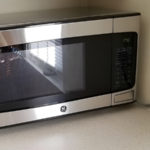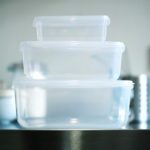Nowadays, in the modern kitchen, a microwave oven is considered an essential and plays an important role. The main function of the device is to reheat food and drinks. Using microwaves, users simply need to place the food or drink to be heated into the device. Then, select the temperature level and heating time. This is considered a time-saving, effortless, and fuel-efficient method compared to reheating food on the stove.
Despite becoming a familiar device, there are still some small aspects regarding the use of microwave ovens that many people are not clear about. On the Quora question and answer forum, a question about microwaves is gaining attention, it is: “Should you place items or anything on top of the microwave, even when it is operational or not?”
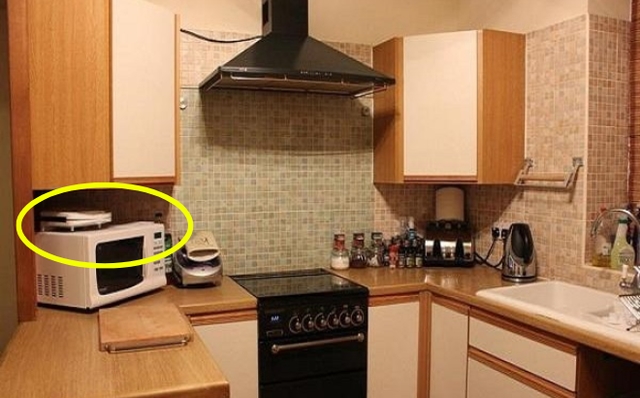
Is it recommended to place items on top of a microwave, especially when the device is operational? (Illustrative image)
So what is the real answer to this question?
Expert advice on placing items on a microwave
According to Rosie Elliott – a professional American chef with 15 years of experience, and also the owner of the Kitchen Appliance Answer blog, it is best to minimizes the practice of placing items on top of microwaves.
“In reality, users can place items on top of microwaves as long as their weight is not too heavy and they do not obstruct any air vents or cooling parts of the device. However, most manufacturers usually advise against putting anything on top of the microwave. Placing items on the microwave can damage both the device and the item itself,” Rosie explained.
In addition, the female chef also provided several other points to prove that it is better not to or limit the practice of placing other items on top of microwaves. First, it concerns the operation process of the device. As we all know, microwaves themselves generate a certain amount of heat energy when operating. Furthermore, some types also have slight vibrations or noise. Therefore, when placing other items on top of a microwave while the device is in operation, the high temperature, vibrations, or noise can affect those items.
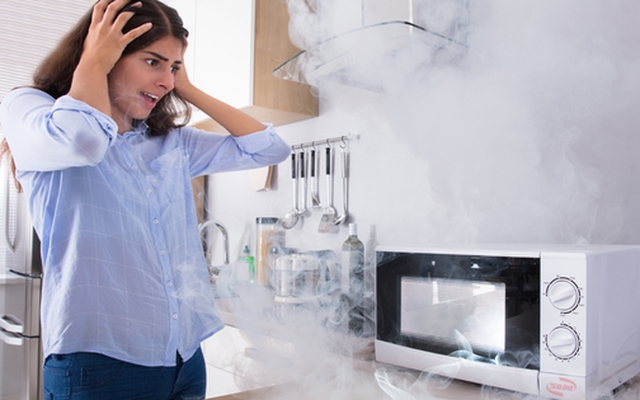
Placing items on top of a microwave can impact the device’s operational efficiency (Illustrative image)
Next, the objects placed on microwaves, such as cloth mats, can impede ventilation holes or cooling parts responsible for the microwave’s heat dispersion. This can also affect the device’s operation process and lifespan.
However, for kitchens with limited space, where microwaves must be utilized for storage purposes, users should consider choosing items that are small and lightweight. Avoid placing heavy objects such as cast iron pots, pans, cutting boards, large amounts of bowls, plates, or especially other devices such as ovens, stoves… on top of the device. Over time, this can damage the microwave’s casing and cause deformation of the device. Bottles, liquid containers, and plants are also items that should not be placed on top of microwaves as they tend to have a high risk of tipping over and can lead to fire.
“When water comes into contact with the electrical parts of the microwave, it can cause a short circuit. This causes serious damage to the device and is one of the causes of device fires,” the female expert emphasized. As for plants, under the heat emitted by the microwave, they may not only fail to grow but also dry out and wither even more when placed in this position.
In summary, microwave ovens will operate efficiently and safely under ideal conditions when there are no other objects placed on top. If users need to utilize the microwave to store items, they should only do so for a short time and with lightweight, compact-sized items. Or equip specialized shelves that are suitable for the microwave’s size instead of placing directly on the top of the device.
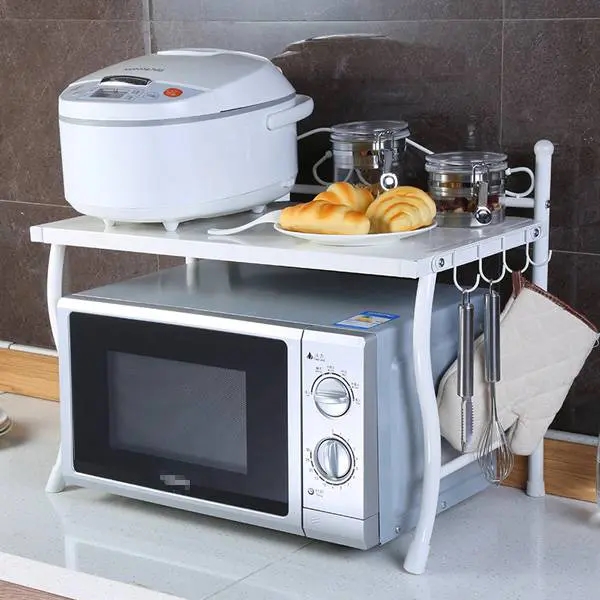
Users can equip specialized shelves, placed on top of the microwave like this (Illustrative image)
In addition to the issue of placing objects on top of microwaves, especially when the device is operational, below are some other recommendations from Today to help use microwaves effectively and prolong their lifespan.
– When reheating food with the microwave, allow the device to have a break of about 30 – 60 seconds. Do not let the device operate continuously.
– Do not use low-quality plastic or disposable nylon products with the microwave.
– Establishing and maintaining the habit of cleaning the microwave about 1 week/time.
– If you want to defrost fresh food with the microwave, remove the food from its packaging.
– Do not use the microwave for purposes other than reheating food, such as drying gloves, towels, aprons…
According to Doi Song Phap Luat



























